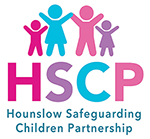What Is Abuse? Parents & Carers Information
What is Child Abuse?
Child protection involves taking steps to safeguard vulnerable children and young people who have suffered or is at risk of suffering from physical, emotional, sexual abuse or neglect. This information provides simple guidance about children who may need protection from harm. Contact Children’s Social Care if you are worried about any child’s welfare.
Emotional Abuse
Emotional abuse is defined as the “persistent emotional maltreatment of a child, such as to cause severe and persistent adverse effects on the child’s emotional development.”
It may involve “conveying to children that they are worthless, unloved, inadequate, or valued only in so far as they meet the needs of another person.”
It may include:
- not giving the child opportunities to express their views deliberately silencing them or ‘making fun’ of what they say or how they communicate.
- imposing age or developmentally inappropriate expectations beyond the child’s developmental capability.
- over protection, limitation of exploration and learning or preventing the child participating in normal social interaction
- the exploitation or corruption of children
- children seeing or hearing the ill-treatment of another- domestic violence
- children witnessing adults abusing drugs or alcohol
- serious bullying (including cyber-bullying)
- causing children frequently to feel frightened or in danger.
Signs which may suggest emotional harm:
- children whose behaviour is excessive. For example, excessive bedwetting, overeating, rocking, head banging
- children who self harm. For example, they may cut or scratch themselves or overdose
- children who attempt suicide
- children who persistently run away from home children who show high levels of anxiety, unhappiness or withdrawal
- children who usually seek out or avoid affection.
Sexual Abuse
Sexual abuse involves forcing or enticing a child or young person to take part in sexual activities, not necessarily involving a high level of violence, whether or not the child is aware of what is happening.
The activities may involve physical contact, including assault by penetration (for example, rape or oral sex) or non-penetrative acts such as masturbation, kissing, rubbing and touching outside of clothing.
They may also include non-contact activities, such as involving children in looking at, or in the production of, sexual images, watching sexual activities, encouraging children to behave in sexually inappropriate ways, or grooming a child in preparation for abuse (including via the internet).
Sexual abuse is not solely perpetrated by adult males. Women can also commit acts of sexual abuse, as can other children.
Signs of possible sexual abuse:
- something a child has told you
- something a child has told someone else
- a child who shows worrying sexualised behaviour in their play or with other children
- a child who seems to have inappropriate sexual knowledge for their age
- a child who may be visiting or being looked after by a known or suspected sexual offender.
Neglect
The persistent failure to meet a child’s basic physical and/or psychological needs, likely to result in the serious impairment of the child’s health or development. Neglect may occur during pregnancy as a result of maternal substance abuse.
Once a child is born it could involve a parent or carer failing to:
- provide adequate food, clothing, shelter, (including exclusion from home or abandonment
- protect a child from physical and emotional harm or danger
- ensure adequate supervision (including the use of inadequate care-givers)
- access appropriate medical care or treatment.
- neglect of, or unresponsiveness to, a child’s basic emotional needs.
Signs which may suggest neglect:
- squalid, unhygienic or dangerous home conditions
- parents who fail to attend to their children’s health or development needs
- children who appear persistently undersized or underweight
- children who continually appear tired or lacking in energy
- children who suffer frequent injuries due to lack of supervision.
Physical Abuse
It may involve hitting, shaking, throwing, poisoning, burning, scalding, drowning or otherwise causing harm to children. Physical harm may also be caused when a parent or carer fabricates the symptoms of, or deliberately induces illness in a child.
Signs which may suggest physical abuse:
- any bruising to a baby – pre-walking stage
- multiple bruising to different parts of the body
- bruising of different colours indicating repeated injuries
- fingertip bruising to the chest, back, arms or legs
- burns of any shape or size
- an injury for which there is no adequate explanation.
Worried About a Child?
Please contact: Hounslow Front Door on 020 8583 6600 (option 2)
Email: earlyhelp@hounslow.gov.uk
or childrensocialcare@hounslow.gov.uk
Out of hours: After 5pm – 9am weekdays or weekends call 020 8583 2222 and ask to speak to the duty social worker
